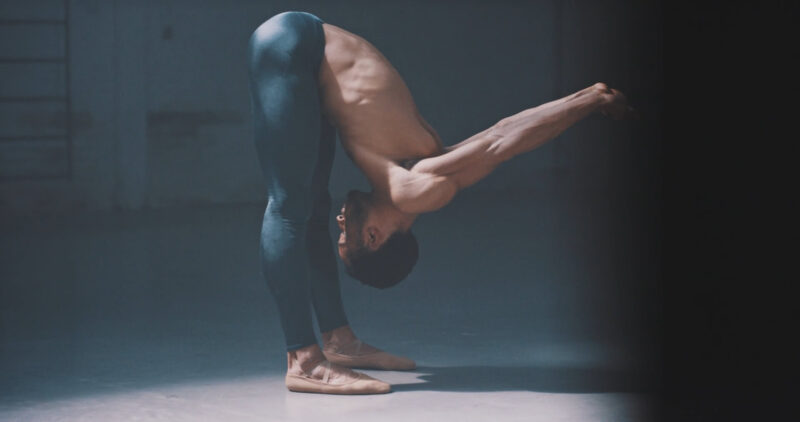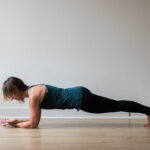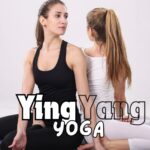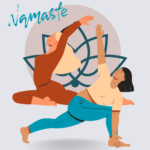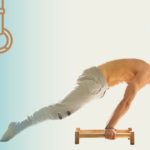When you set specific goals in your yoga practice, it becomes a journey of growth, not just physically, but mentally and emotionally too. Yoga is about challenging yourself in different ways, whether it’s mastering new poses, deepening your breathing techniques, or improving your overall balance.
Setting measurable and attainable goals brings clarity and focus to your practice, ensuring that every session is purposeful and helps you progress.
This article will explore the best yoga goals to push your limits and elevate your yoga journey, no matter your experience level.
- Improve flexibility
- Build strength
- Enhance balance
- Explore new yoga styles
- Master breathing techniques (Pranayama)
- Develop a regular meditation practice
- Create a consistent home practice
- Increase endurance
- Deepen the mind-body connection
- Work on inversions
- Reduce stress and anxiety
- Improve core strength
- Enhance posture
- Achieve emotional balance
- Explore yoga philosophy
- Build bone strength
- Maintain a healthy weight
- Increase focus and concentration
1. Improve Flexibility
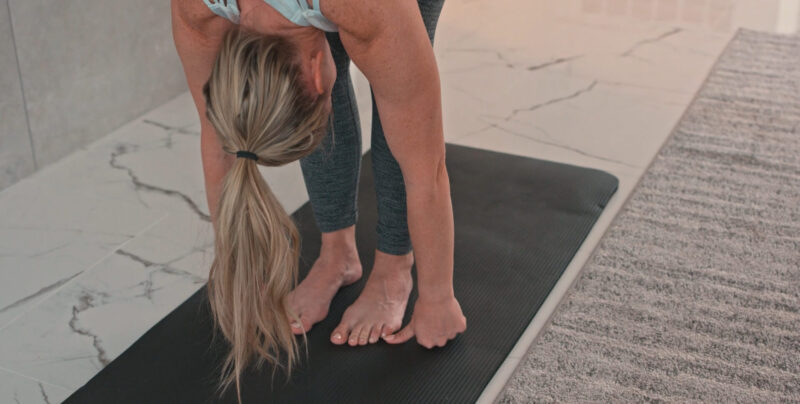
Real flexibility enhances mobility, helps prevent injuries, and improves your overall physical health. As you get older, flexibility becomes even more critical for joint health and maintaining a full range of motion.
To target flexibility, focus on muscle groups that tend to get tight, like your hamstrings, hips, and shoulders. Poses like Uttanasana (Forward Fold) and Hanumanasana (Monkey Pose) are great for opening up these areas. If bending forward to touch your toes seems impossible, starting with a deep bend at the knees and working gradually toward straighter legs will bring progress over time.
Deep stretches like Pigeon Pose or Butterfly Pose are great examples of flexibility-focused poses that, over time, unlock tension in the body.
2. Build Strength
Developing strength also aids in better posture, reduces injury risk, and helps you feel more stable in challenging poses.
Target Key Muscle Groups
To build strength, focus on activating specific muscle groups. Here are a few poses that target different areas:
- Upper Body Strength: Poses like Plank, Crow Pose, and Chaturanga are excellent for engaging your shoulders, arms, and chest
- Core Strength: Engage your core with Boat Pose and Low Plank, which stabilize your spine and improve posture
- Leg and Glute Strength: Try poses like Warrior I and II, Chair Pose, and Goddess Pose to engage your quads, hamstrings, and glutes
You can combine yoga and calisthenics for even better results.
3. Enhance Balance
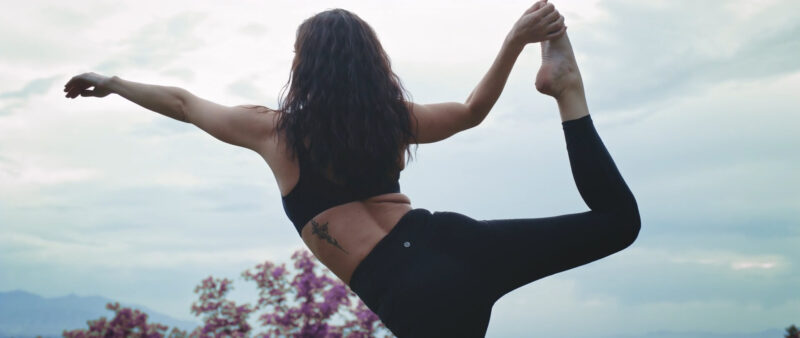
As you challenge your body to stay steady in a variety of positions, you’ll also engage muscles you don’t typically use, helping you strengthen your core and improve overall body control.
Key Balance-Building Poses
Start by incorporating these poses into your practice to enhance balance:
- Tree Pose (Vrksasana): A foundational balancing pose that teaches you to find stability on one leg. It engages your core, improves posture, and strengthens your legs.
- Dancer’s Pose (Natarajasana): This pose requires both balance and flexibility. It challenges your coordination while improving your concentration and stability.
- Eagle Pose (Garudasana): Balancing on one leg while wrapping the other around it forces you to focus and engage your core to stay upright. This pose also stretches your hips and shoulders, helping with balance in tight spaces.
4. Explore New Yoga Styles
Each style offers different benefits, techniques, and philosophies that can challenge you in fresh ways.
Different Yoga Styles to Explore
- Vinyasa Yoga: A dynamic style that links breath to movement, making it ideal for building stamina and coordination. The constant flow between poses keeps the body active and the mind engaged.
- Ashtanga Yoga: Known for its rigorous and structured approach, Ashtanga follows a specific sequence of poses, focusing on strength, flexibility, and endurance.
- Yin Yoga: This slow-paced style involves holding poses for extended periods, targeting deep connective tissues. Yin helps improve flexibility and encourages a calm, meditative state.
- Iyengar Yoga: With an emphasis on precision and alignment, Iyengar uses props like blocks and straps to help practitioners achieve correct posture in each pose, making it great for those who want to deepen their form and technique.
- Restorative Yoga: This gentle style focuses on relaxation, using props to support the body in passive poses. It’s perfect for recovery and stress relief.
5. Master Breathing Techniques (Pranayama)
Breathing is a fundamental aspect of yoga, and mastering Pranayama can significantly enhance your practice. Pranayama involves controlling your breath to improve mental clarity, reduce stress, and increase energy levels.
Key Pranayama Techniques
- Nadi Shodhana (Alternate Nostril Breathing): This technique balances the body’s energy channels, promoting relaxation and mental clarity. It’s excellent for reducing stress and calming the mind.
- Ujjayi (Victorious Breath): Often used during yoga sequences, Ujjayi breathing involves inhaling deeply through the nose with a slight constriction in the throat, creating a soft sound. This helps regulate your breath and keeps you focused during challenging poses.
- Kapalabhati (Skull Shining Breath): A more advanced technique, Kapalabhati involves forceful exhalations and passive inhalations. It’s known for energizing the body, improving digestion, and detoxifying the respiratory system.
- Bhramari (Bee Breath): This calming technique involves making a gentle humming sound while exhaling, which helps to soothe the nervous system and relieve tension.
6. Develop a Regular Meditation Practice
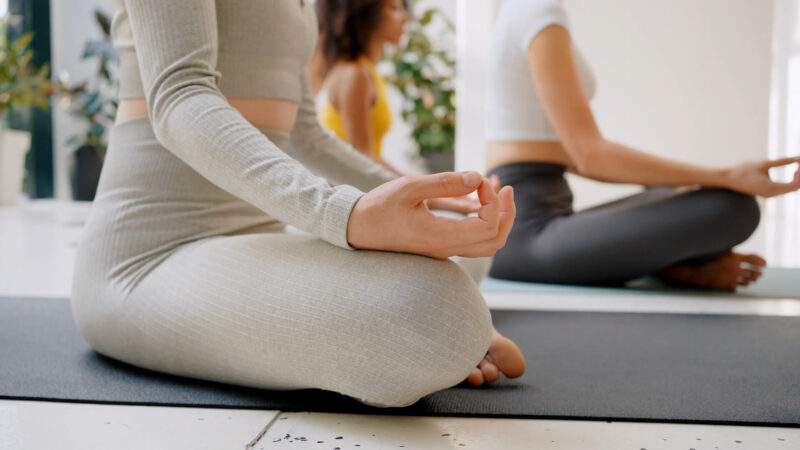
Meditation is a core component of yoga, focusing on calming the mind and enhancing mindfulness.
Benefits of Meditation in Yoga
- Reduces Stress and Anxiety: Regular meditation lowers stress levels by helping you stay present and calm, reducing anxiety over past or future events.
- Improves Focus: Meditation sharpens your ability to concentrate both on and off the mat. This can make you more attentive during yoga practice and in daily tasks.
- Encourages Emotional Balance: A steady meditation practice helps regulate emotions, making it easier to manage stress and handle challenges with a clear mind.
- Enhances Mindfulness: Meditation encourages you to stay present, deepening your overall awareness during yoga and in daily life.
7. Create a Consistent Home Practice
A home practice allows you to tailor your sessions to what your body needs on any given day, whether it’s strength building, flexibility, or mental clarity.
Benefits of a Home Practice
- Flexibility: You can practice at any time that suits your schedule, without the need to attend classes at set times.
- Personalization: Tailor your practice to your specific needs and goals, choosing the poses, duration, and intensity that work for you.
- Cost-Effective: Practicing at home eliminates the need for class fees, making yoga more accessible and affordable.
- Self-Discipline: Building a home practice fosters self-motivation and discipline, as you take full responsibility for your progress.
8. Increase Endurance
Endurance in yoga refers to the ability to hold poses for longer durations and sustain energy throughout a session.
Key Poses to Build Endurance
- Plank Pose: A classic strength-building pose that challenges your core, arms, and legs. Start by holding for 20 seconds and gradually work up to longer holds.
- Chair Pose (Utkatasana): This powerful pose strengthens your legs and core while building endurance in the lower body.
- Warrior II (Virabhadrasana II): Holding Warrior II for extended periods improves stamina in your legs and shoulders, while enhancing balance and concentration.
- Boat Pose (Navasana): A great way to build endurance in your core, Boat Pose challenges your abdominal muscles and requires focus to maintain balance.
9. Deepen the Mind-Body Connection
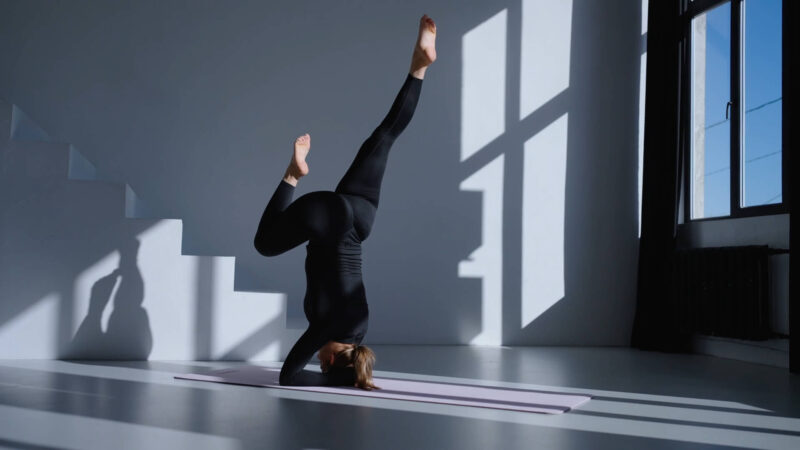
A deep mind-body connection is central to yoga practice. It involves aligning your physical movements with your mental focus, bringing awareness to every part of your body during each pose.
Techniques to Enhance the Mind-Body Connection
- Mindful Movement: Focus on how each part of your body feels as you move through poses. Be aware of sensations, tensions, and adjustments that occur with each movement.
- Breath Awareness: Coordinate each inhale and exhale with your movements. Syncing your breath with your flow increases mindfulness and helps you stay grounded in the present moment.
- Body Scanning: While in a pose, mentally scan your body from head to toe, observing where tension or discomfort lies. This can help you release unnecessary strain and improve alignment.
- Mindfulness Meditation: Incorporating short mindfulness sessions before or after yoga can further strengthen your mind-body connection. Focus on your breath and mental state, bringing attention to how your body feels in the present moment.
10. Work on Inversions
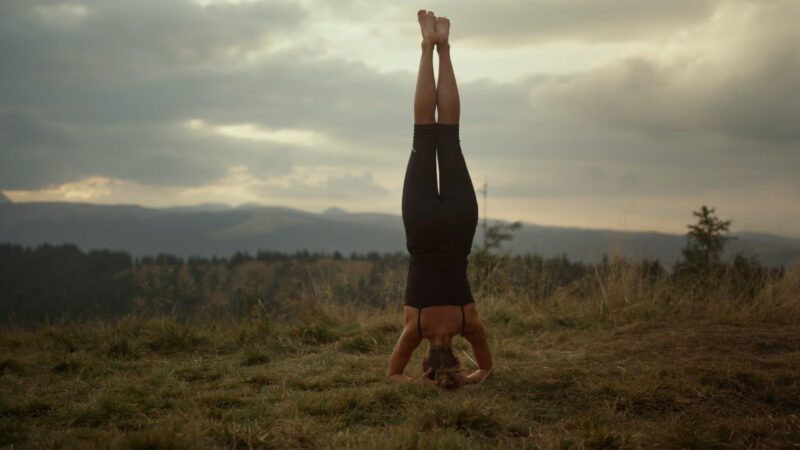
Inversions are some of the most challenging and rewarding poses in yoga. By flipping your body upside down, you not only strengthen key muscle groups but also improve circulation, balance, and mental clarity.
Key Inversions to Practice
- Headstand (Sirsasana): Known as the “king of all poses,” Headstand strengthens your core, shoulders, and arms while improving focus and balance.
- Handstand (Adho Mukha Vrksasana): This challenging pose builds upper body strength and requires intense concentration. It also improves overall body awareness.
- Forearm Stand (Pincha Mayurasana): A less intense alternative to Handstand, Forearm Stand strengthens your core and shoulders while improving balance and flexibility.
- Shoulder Stand (Salamba Sarvangasana): Easier than a Headstand, this pose strengthens the shoulders and upper back while promoting better circulation and stimulating the thyroid.
11. Reduce Stress and Anxiety
Yoga is widely known for its ability to reduce stress and anxiety, making it an essential goal for anyone looking to improve their mental well-being.
Key Poses for Stress Relief
- Child’s Pose (Balasana): This restorative pose allows you to relax and breathe deeply, releasing tension in the back, shoulders, and neck.
- Forward Fold (Uttanasana): Gently stretches the hamstrings and lower back while calming the mind and promoting introspection.
- Legs Up the Wall (Viparita Karani): A simple inversion that helps improve circulation, calm the nervous system, and reduce anxiety.
- Corpse Pose (Savasana): Often used at the end of a yoga practice, Savasana allows your body to fully relax, helping you process and release any stress from your practice.
12. Improve Core Strength
A strong core not only supports better posture but also protects your spine, improves body alignment, and enhances overall physical performance.
Key Poses for Core Strength
- Boat Pose (Navasana): This pose directly targets the core, engaging the abdominals and lower back while improving overall balance.
- Plank Pose: A simple yet highly effective pose that strengthens not only the core but also the arms and shoulders. Holding Plank Pose for longer durations helps build endurance.
- Low Plank (Chaturanga Dandasana): A powerful pose for engaging the core and strengthening the muscles around your midsection, shoulders, and arms.
- Dolphin Pose: Engages the core while also working the shoulders and upper body, providing a full-body workout that enhances core stability.
- Side Plank (Vasisthasana): This variation of Plank Pose adds an extra challenge by targeting the obliques, which are important for rotational stability and overall core strength.
13. Enhance Posture
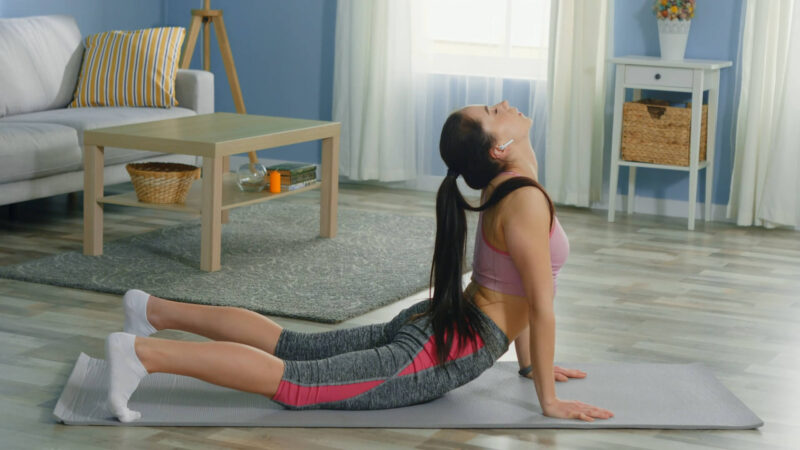
Good posture is the foundation of a healthy yoga practice, and improving it has far-reaching benefits for your overall well-being.
Key Poses to Improve Posture
- Mountain Pose (Tadasana): This foundational pose teaches you how to stand tall with proper alignment. It engages the core, legs, and shoulders, ensuring your body is balanced and aligned.
- Cobra Pose (Bhujangasana): Strengthens the upper back and encourages proper spinal alignment, which is critical for good posture.
- Bridge Pose (Setu Bandhasana): Opens up the chest and shoulders while strengthening the muscles around the spine, which supports better posture.
- Cat-Cow Pose (Marjaryasana-Bitilasana): This dynamic movement between flexion and extension of the spine helps improve spinal mobility and posture by warming up the back and aligning the vertebrae.
- Warrior I (Virabhadrasana I): Engages the legs and core while opening the chest and shoulders, promoting a more upright posture.
14. Achieve Emotional Balance
When you focus on emotional balance in your practice, you cultivate a calm, centered state of mind that carries over into your daily life.
Key Poses for Emotional Balance
- Seated Forward Bend (Paschimottanasana): A calming pose that stretches the spine and hamstrings while promoting introspection and emotional release.
- Bound Angle Pose (Baddha Konasana): Helps open the hips, an area where we often store emotional tension. This pose encourages the release of blocked energy.
- Child’s Pose (Balasana): A deeply restorative posture that allows you to surrender, calm your mind, and reconnect with your breath.
- Reclined Twist (Supta Matsyendrasana): This gentle twist massages the spine and internal organs, releasing physical and emotional tension.
- Corpse Pose (Savasana): A final relaxation pose that allows you to fully process and release any lingering emotional stress after your practice.
15. Explore Yoga Philosophy
While most people associate yoga with physical poses, its roots go much deeper. Yoga philosophy provides a rich foundation for understanding the practice beyond the mat.
Key Concepts in Yoga Philosophy
- Yamas: Ethical guidelines that focus on how we interact with the world around us. The five yamas include non-violence (ahimsa), truthfulness (satya), non-stealing (asteya), moderation (brahmacharya), and non-possessiveness (aparigraha).
- Niyamas: Personal observances that guide self-discipline and spiritual growth. The five niyamas are purity (saucha), contentment (santosha), self-discipline (tapas), self-study (svadhyaya), and surrender (ishvara pranidhana).
- The Eight Limbs of Yoga: Outlined by Patanjali in the Yoga Sutras, this framework guides both the physical and spiritual aspects of yoga. It includes yamas, niyamas, asanas (physical postures), pranayama (breath control), pratyahara (withdrawal of senses), dharana (concentration), dhyana (meditation), and samadhi (enlightenment).
16. Build Bone Strength
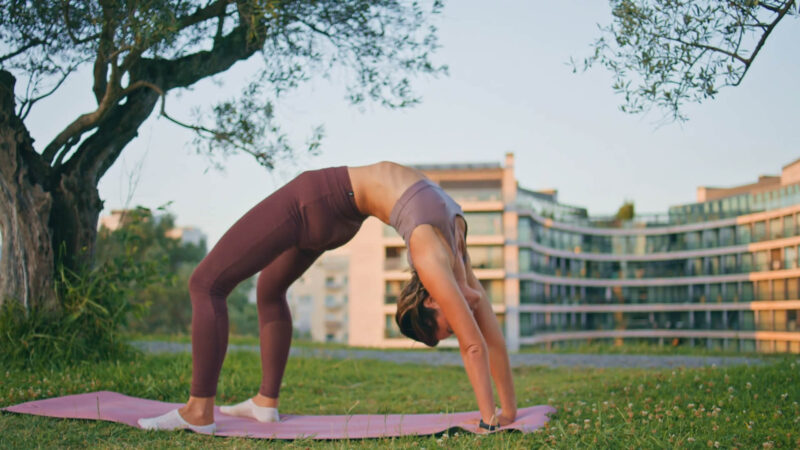
Weight-bearing yoga poses promote bone density by encouraging bones to adapt to the load placed on them.
Key Poses for Bone Strength
- Warrior II (Virabhadrasana II): This pose engages the legs and hips, which are key areas for bone-building. Holding Warrior II for extended periods increases the load on your bones, encouraging them to strengthen.
- Chair Pose (Utkatasana): A powerful weight-bearing pose that targets the hips, thighs, and lower back, Chair Pose helps build strength in the bones of the lower body.
- Tree Pose (Vrksasana): Balancing on one leg places weight on the bones in your standing leg, helping to build bone density in the hips and legs.
- Plank Pose: Engages the shoulders, arms, and core while putting weight on the bones in your upper body, encouraging growth in the wrists and arms.
- Bridge Pose (Setu Bandhasana): A pose that works the spine, hips, and shoulders, areas that are crucial for maintaining bone strength.
17. Maintain a Healthy Weight
Yoga is an excellent tool for maintaining a healthy weight by combining physical activity with mindfulness. While it may not burn as many calories as high-intensity workouts, yoga contributes to weight management through stress reduction, increased body awareness, and improved metabolism.
Key Yoga Styles for Weight Maintenance
- Vinyasa Flow: This dynamic style of yoga links movement with breath, creating a continuous flow of poses that increase your heart rate and burn calories. It helps improve both strength and endurance while keeping your body active.
- Ashtanga Yoga: A physically demanding style of yoga that follows a set sequence of postures. Ashtanga requires stamina and builds muscle strength, contributing to a more toned and lean physique.
- Bikram Yoga: Practiced in a heated room, Bikram yoga involves a series of 26 poses. The heat increases sweating, promoting detoxification, and encourages the body to burn more calories.
- Power Yoga: A more intense form of Vinyasa, Power Yoga focuses on building strength and stamina, making it effective for burning calories and toning muscles.
18. Increase Focus and Concentration
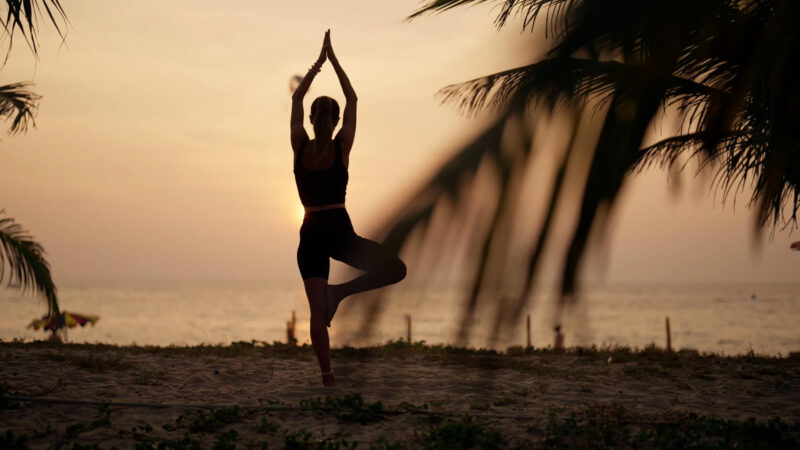
Yoga is an excellent way to boost your ability to focus and concentrate. Through mindful movement, breath control, and meditation, yoga enhances mental clarity and sharpens your awareness.
Key Poses to Improve Focus
- Tree Pose (Vrksasana): This balancing pose requires full attention and concentration to maintain stability on one leg. It strengthens the mind-body connection and improves focus by forcing you to stay centered.
- Eagle Pose (Garudasana): Balancing and twisting in this pose challenges both physical and mental coordination. It sharpens your concentration by requiring careful attention to alignment and balance.
- Dancer’s Pose (Natarajasana): A dynamic balance pose that requires focus to maintain stability while opening the chest and shoulders. It strengthens your mental focus as you balance on one leg and reach forward.
- Warrior III (Virabhadrasana III): This challenging balancing pose engages the core, legs, and arms while requiring intense focus to maintain alignment and balance.
FAQs
How often should I practice yoga to see results?
You should aim to practice yoga at least 3-4 times per week to start seeing noticeable results. Consistency is more important than duration, so even short, daily sessions can lead to progress in flexibility, strength, and mental clarity.
What’s the best time of day to practice yoga?
The best time to practice yoga depends on your schedule and personal preferences. Many people prefer early morning to energize their day, while others find evening sessions help them unwind and relax before bed.
Choose a time when you can practice regularly without distractions.
Can yoga help with back pain?
Yes, yoga can help relieve back pain. Poses like Cat-Cow, Child’s Pose, and Bridge Pose stretch and strengthen the back muscles, promoting better posture and reducing tension in the spine. Always consult a doctor if your pain is severe.
How long should I hold a yoga pose?
You can hold most yoga poses for 20-30 seconds, depending on your experience level. Beginners may start with shorter holds and gradually increase the time as their strength and endurance improve. Restorative poses may be held for several minutes.
Do I need to be flexible to start yoga?
No, you don’t need to be flexible to start yoga. Flexibility improves with consistent practice. Yoga is about progressing at your own pace, so start where you are, and you’ll see gradual improvements over time.
Can yoga help with weight loss?
Yes, certain types of yoga, like Vinyasa or Power Yoga, can contribute to weight loss by burning calories and building muscle tone. However, yoga also helps with mindful eating and stress reduction, which can support long-term weight management.
How can yoga improve my mental health?
Yoga helps improve mental health by reducing stress, anxiety, and depression. Breathing exercises and meditation promote relaxation and emotional balance, while physical movement releases tension and boosts mood-enhancing hormones like serotonin.
What’s the difference between yoga and meditation?
Yoga combines physical postures with mindfulness and breath control, while meditation focuses entirely on calming the mind and being present without physical movement. Many yoga practices incorporate meditation to enhance the mental benefits.
Last Words
If you want to make real progress in your yoga practice, setting solid goals will get you there. You’ll start noticing changes in your strength, flexibility, and mindset as long as you stick to what you’re working on.
Over time, the consistency pays off, and you’ll feel the difference. So keep it simple, stay committed, and enjoy how yoga can make a real impact on your life.

